Overview
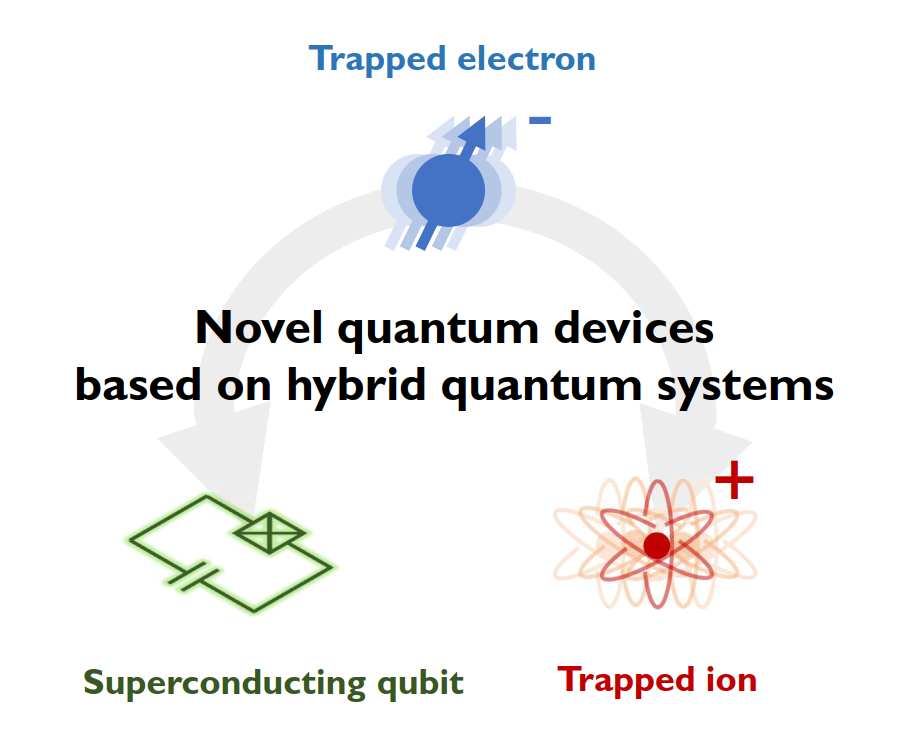 Electrons interfere as waves and photons behave like particles ―
"quantum" objects exhibit wonderful nature beyond our common sense cultivated in our daily lives.
"Quantum electronics" is the research field fully utilizing such quantum nature to implement information
processing, sensing and so forth. Representative applications, such as quantum information processing and
quantum sensing, are expected to pioneer the science in this century.
Electrons interfere as waves and photons behave like particles ―
"quantum" objects exhibit wonderful nature beyond our common sense cultivated in our daily lives.
"Quantum electronics" is the research field fully utilizing such quantum nature to implement information
processing, sensing and so forth. Representative applications, such as quantum information processing and
quantum sensing, are expected to pioneer the science in this century.
Our "classical" computers acquire multiple functionalities by the interplay of various physical systems.
Hard-disk drives utilizes the magnetism, processors consist of a bunch of semiconductor transistors,
and fast communication mediates light. Such hybridizations will play significant roles in future
quantum technologies as well. However, the quantum system is very fragile and difficult to manipulate.
Moreover, the states of the quantum system collapse by measurement and cannot be duplicated (no-cloning theorem).
Therefore, in the construction of the hybrid quantum systems one must control the quantum systems
and convert one to another, all in such a manner that preserves the fragile quantum nature of the systems.
In Noguchi laboratory, we aim at realizing the hybridization of quantum technologies, putting special focus on
"superconducting quantum bits," "trapped ions" and "trapped electrons."
Brief explanations about the topics investigated in Noguchi laboratory are listed below.
Paul trap for electrons
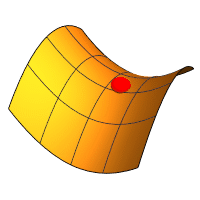
Electrons, usually stably residing in materials, can be trapped at desired point in vacuum using a technique called Paul trap. In contrast to the ones in materials, electrons trapped in vacuum do not experience scattering events by surrounding atoms and electrons, so that it is a good quantum system with tis quantum nature preserved for a long period. The technique of Paul trap and Penning (Wolfgang Paul and Hans G. Dehmelt, Nobel Prize in Physics, 1989) and quantum control over trapped ions (David Wineland, Nobel Prize in Physics, 2012) has become vastly developed; however, no intensive effort has been devoted to electrons in a Paul trap after a pioneering work by Dehmelt's group. It is only recently that trapped electrons gather attention again as a constituent element of hybrid quantum systems. Our laboratory ambitions to precisely measure and control the vibrational state of an electron in a Paul trap in the quantum level, aided by the superconducting circuits and microwave technologies.
Hybrid quantum system with superconducting circuits
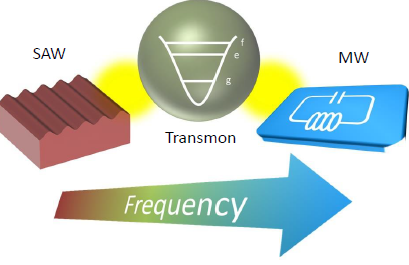
Cooled down to 20 mK (0.02 degree above the absolute zero), a good quantum system can be realized by using
superconducting wires involving superconducting quantum elements called Josephson junctions.
This is dubbed as "artificial atom" or "superconducting qubit" as well that provides us with a well-controllable two-level quantum system.
High yield and reproducibility, assisted by microwave technologies enabling rapid control and flexible design, have made
superconducting qubit rapidly develop. Research and development of superconducting qubit is nowadays done worldwide scoping the
realization of quantum computers, and in recent years, one- and two-qubit gates have been implemented with errors being less than 1%.
Hybrid quantum systems have gained its importance as a route to manipulate or sense quantum states of matter using such a
well-developed tool of superconducting qubit. By now, superconducting qubits are successfully hybridized in harmony with
mechanical oscillator, spin waves and elastic waves. In Noguchi laboratory, we explore a strongly-coupled hybrid quantum system of
surface acoustic (Rayleigh) waves and a superconducting qubit. In particular, we are studying artificial radiation pressure
that appears when a special kind of superconducting circuit contaitning multiple Josephson junctions is used.
Artificial radiation pressure is a technique that artificially equips microwaves with huge radiation pressure through
large nonlinearity of the superconducting circuit to develop unprecedented regime of the hybrid quantum system involving surface acoustic waves.
Cubic transmon qubit for the superconducting quantum computer

There are number of implementations of superconducting qubits using Josephson junctions, such as charge qubit, flux qubit, phase qubit, transmon qubit, fluxonium qubit, and so on, of which the transmon qubit is widely adopted for current exploration of superconducting quantum computers. In Noguchi laboratory, we develope a new type of qubit, named "cubic transmon qubit," which was inspired by the artificial radiation pressure we developed for the hybrid quantum system. This cubic transmon qubit has an advantage that can execute fast two-qubit gates on a two far-detuned qubits and thus addresses some of the problems possessed by an architecture using conventional transmon qubits. On the other hand, the current design of our cubic transmon qubit is vulnerable to decoherences, therefore more advanced design of the qubit design is developed to overcome this issue.
Electron-ion mixture
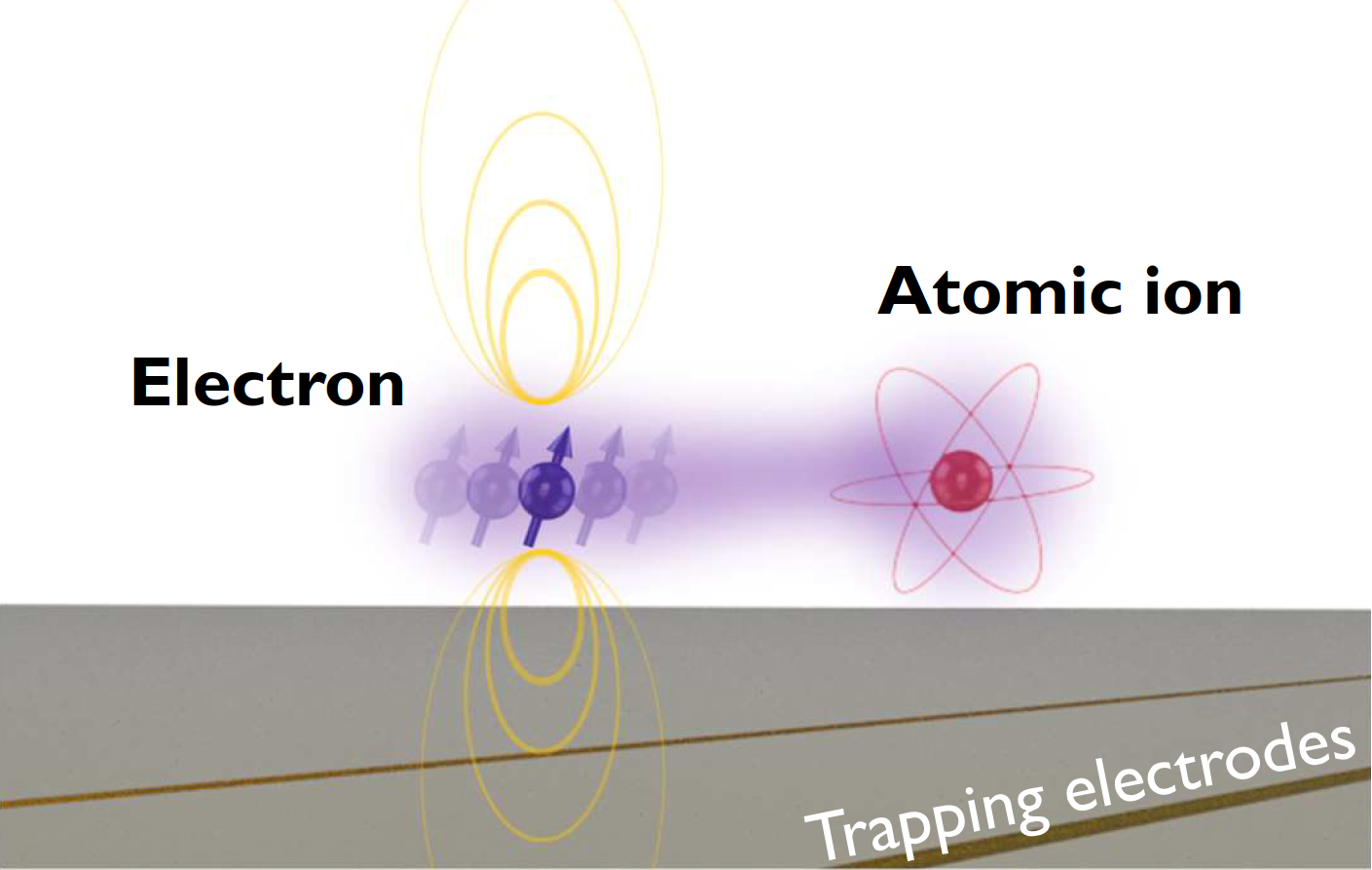
Laser-cooled atomic ions in a Paul trap has been studied as intensively as the superconducting qubits,
in the scope of the quantum-technology applications. Hovering ions in vacuum are so completely isolated
from the environment that their electronic and nulear spins exhibit ultralong coherence times and
manifests themselves as good quantum systems. Ions, on top of that, interact with each other by Coulomb force,
hence allow high-fidelity two-qubit gates even on a pair of non-nearest-neighbor ions via their oscillation quanta.
In terms of scalability, however, simultaneous operation of multiple two-qubit gates is hindered using trapped ions,
unlike the case of superconducting qubits. Hence deeply parallel task with the many-qubit quantum circuit is not facile,
so is the scalable quantum computer using the trapped ions only. Our idea is to realize the hybrid quantum system
constructed by trapped ions and superconducting qubits, where advantages of the two quantum systems are combined to
symergetically enhance the functionality.
Nonetheless, the interaction between trapped ions and superconducting circuits is known to be very weak. To connect these
two systems, we utilize the system of trapped electron as an interface. A trapped electron, owing to its orders-of-magnitude
smaller mass, exhibits larger amplitude of zero-point oscillation than that of an atomic ion. This property allows for
stronger coupling to the (superconducting) circuit by preparing appropreate anntenna, while it can also couple to the atomic ion
by the Coulomb force. This is how trapped electrons can bridge the gap between the atomic ions and the superconducting qubits.
Motivated by such a prospect, we attempt to realize electron-ion composite system by trapping them close to each other using a single surface electrode trap chip.
Photonic quantum interface on a surface-electrode ion trap
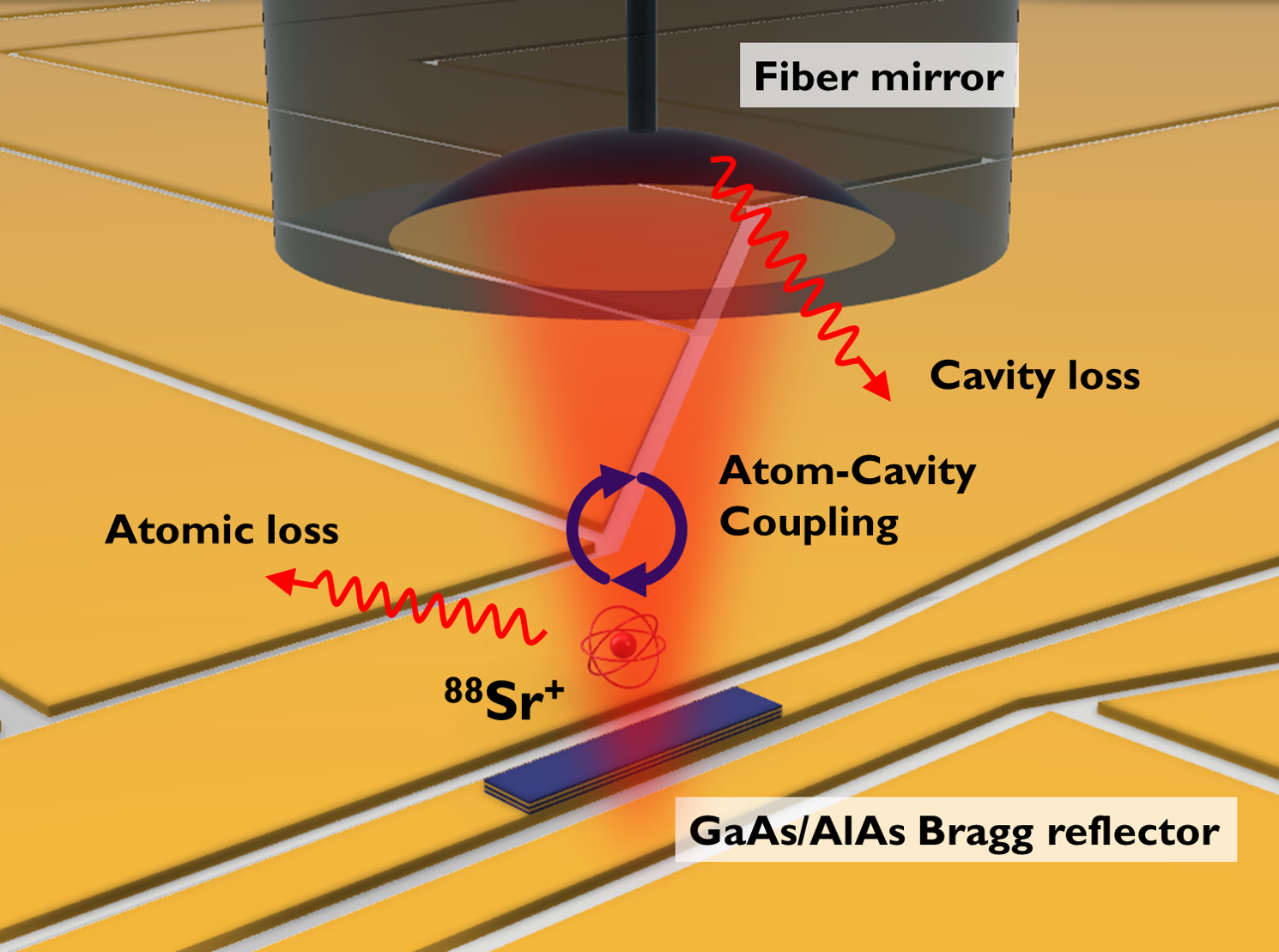
High-precision quantum gates and development of large-scale quantum systems have been of principal interest in the context of the study on laser-cooled atomic ions, one of the most promising carrier of quantum information. Aside from these activities, atomic ions are viewed as tools to realize photonic quantum interfaces that enable us to interchange quantum states between ions and photons, owing to the capability of ions to absorb and emit photons. At present, a photonic quantum interface using an ion has been implemented in a Fabry-Perot cavity constructed in a bulky, 3D confugiration. We aim at, in this project, constructing photonic quantum interface using ions on a 2D platform of a surface-electrode ion trap aided by semiconductor fab technologies. Such a reduction of the system dimension makes it facile to achieve smaller, rigid cavities to promote further developement of photonic quantum interfaces. Photonic quantum interfaces may allow multiple surface-electrode trap chips to be connected to each other, so that the scalability of the trapped ion system will make a leap forward to the realization of quantum network and even "quantum internet."

